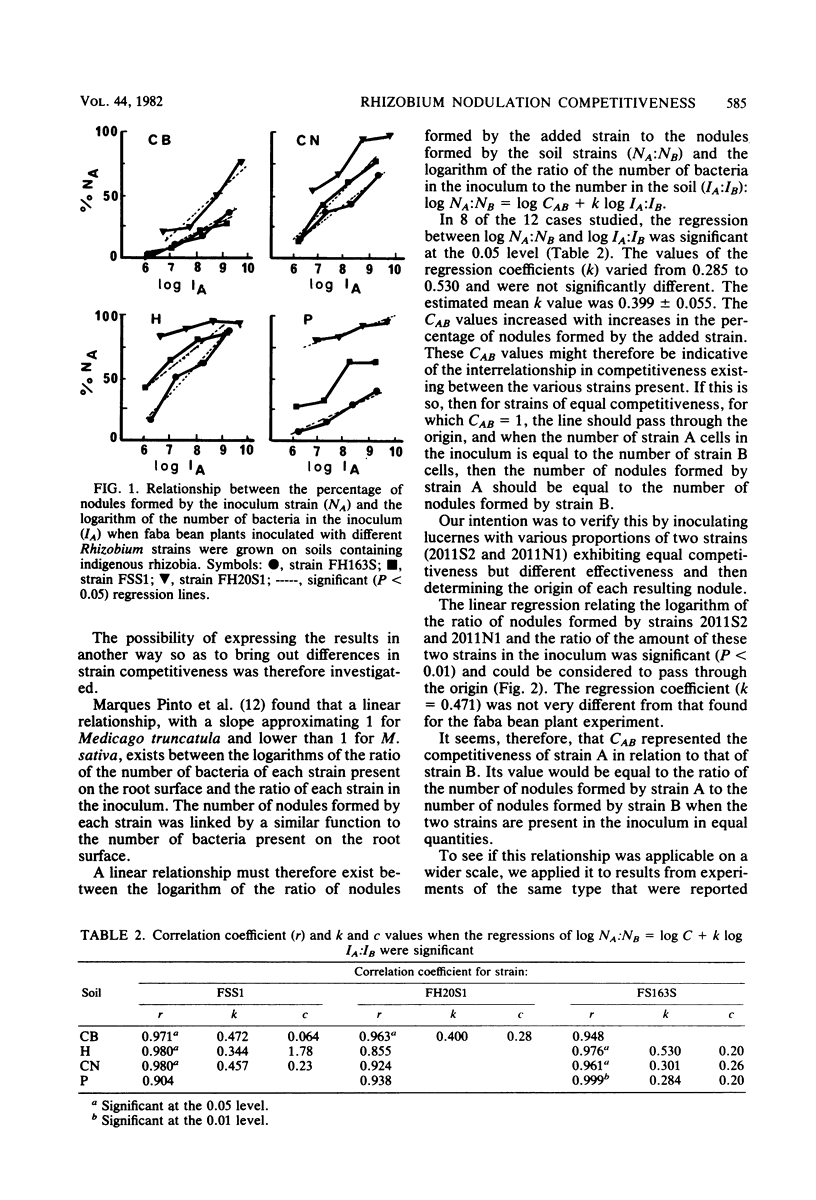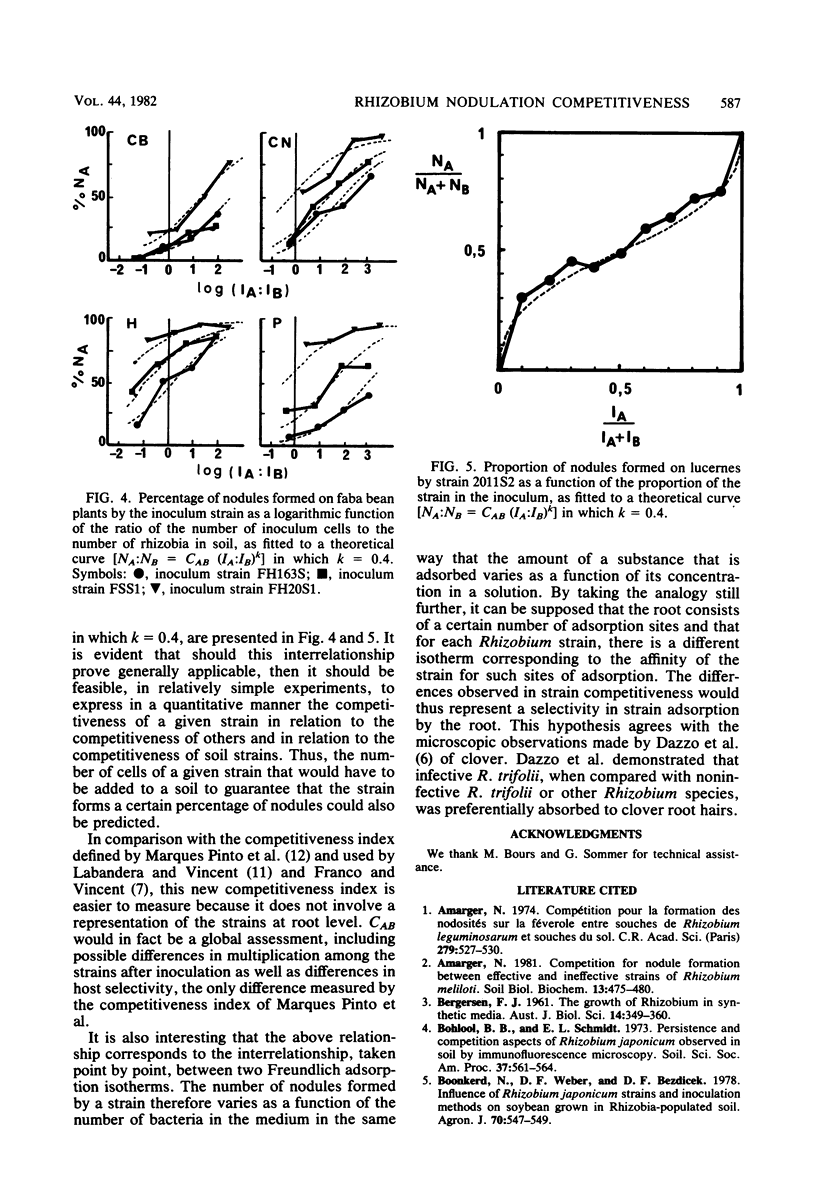Abstract
We compared the nodulation competitiveness of three strains of Rhizobium leguminosarum by counting the number of nodules formed on faba bean plants after the application at sowing time of different concentrations of the strains to soils already containing Rhizobium strains of the same species. A relationship of type y = axn was found to exist between the ratio of the nodules formed by the applied inoculum strain to the nodules formed by the soil strains and the ratio of Rhizobium cells in the inoculum to the cells in the soil. This relationship was also confirmed in another competition experiment in which two R. meliloti strains of identical competitiveness were mixed in various proportions. The relationship can also be applied to the majority of results reported in the literature. Should it prove to be more widely applicable, it could be used to estimate the relative competitiveness of Rhizobium strains and thus predict the performance of an inoculum in a given soil.
Full text
PDF





Selected References
These references are in PubMed. This may not be the complete list of references from this article.
- Dazzo F. B., Napoli C. A., Hubbell D. H. Adsorption of bacteria to roots as related to host specificity in the Rhizobium-clover symbiosis. Appl Environ Microbiol. 1976 Jul;32(1):166–171. doi: 10.1128/aem.32.1.166-171.1976. [DOI] [PMC free article] [PubMed] [Google Scholar]
- VINCENT J. M., WATERS L. M. The influence of the host on competition amongst clover root-nodule bacteria. J Gen Microbiol. 1953 Dec;9(3):357–370. doi: 10.1099/00221287-9-3-357. [DOI] [PubMed] [Google Scholar]


